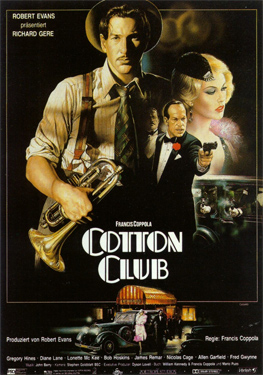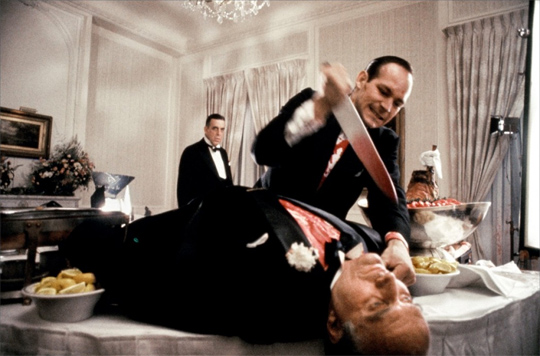 Your humble columnist has been pretty busy lately. Aside from the normal visitors, side projects, and entertainments of life in the big city, I’ve been going through the applications for the California State Summer School for the Arts, a summer program held at the California Institute for the Arts where I’m on the faculty of the creative writing department. It’s taken me awhile to figure out just what I’m looking for from these young writers, but I’ve finally boiled it down to a few things.
Your humble columnist has been pretty busy lately. Aside from the normal visitors, side projects, and entertainments of life in the big city, I’ve been going through the applications for the California State Summer School for the Arts, a summer program held at the California Institute for the Arts where I’m on the faculty of the creative writing department. It’s taken me awhile to figure out just what I’m looking for from these young writers, but I’ve finally boiled it down to a few things.
I tend to forgive errors in things that can be easily taught. Anyone who made it through high school can master grammar and spelling with little effort. Likewise I don’t really worry about plotting, characterization, overall structure or even clarity. Again, those are things that can be taught to anyone with a little insight, intelligence, sensitivity, humility and courage. A lot of my job as a writing instructor is to bring out those qualities in my students. The thing I look for in the applications are the things that can’t be taught: musicality of language, a taste for strong subject matter, and, most importantly, vision.
Vision comes about when a person can turn their point of view, personal experience, and internal life into some kind of aesthetic artifact, whether it’s a poem, a play, a TV series, an album, or a movie. I’ll forgive almost anything of an artist if they have a singular vision, and my favorite artists have visions that change my life.
I bring all of this up because I don’t want to say what I’m about to say: The Cotton Club is the first movie I’ve seen in this trip through the work of Francis Ford Coppola that fails, it seems to me, due to a lack of vision. Up until The Cotton Club, I’ve really enjoyed all of his films, even (maybe even especially) One from the Heart, because each one of them had a rigorous particularity of execution. Whatever else you can say about him, Coppola’s movies always look good, and always have something to say. Not so much with The Cotton Club.
On the surface it seems like all the elements are in place: gangsters, musicians, club owners, and a pair of very Coppola brothers, all set against Harlem’s legendary Cotton Club. As soon as the movie starts, however, its problems rise to the surface. While nominally about a Harlem club, the film concerns itself far more with white gangsters and businessmen than the musicians and performers, and even when the story does bother with the artists, their performances are handled with almost no musicality whatsoever. The violence, also, has a kind of muted quality, lacking all drama and force. And, frankly, Fred Gwynne as an enforcer? Herman Munster? No. As stunt casting, it’s brilliant. For what this movie wanted to do? Not quite. No. The movie seems to just plod along, bored with its own opulence.
 There’s a reason for this. Remember our old friend Robert Evans? He wanted to make this movie. He was already 13 million into production, with Las Vegas money, no less, when the disaster of the script forced him to go to Coppola for a rewrite. Coppola took the job because he was still in hock for the box office failure of One from the Heart. After the rewrite, Evans begged Coppola to direct, and you can tell by the finished product about how much Coppola wanted to make the film. It’s like a sleepwalk through Coppola clichés. Stories of production problems preceded the release of The Cotton Club, but that’s no reason for the movie to be bad. Production problems are a staple of Coppola’s career. What it boils down to is that this was never Coppola’s movie, and he did it anyway, because he needed the dough.
There’s a reason for this. Remember our old friend Robert Evans? He wanted to make this movie. He was already 13 million into production, with Las Vegas money, no less, when the disaster of the script forced him to go to Coppola for a rewrite. Coppola took the job because he was still in hock for the box office failure of One from the Heart. After the rewrite, Evans begged Coppola to direct, and you can tell by the finished product about how much Coppola wanted to make the film. It’s like a sleepwalk through Coppola clichés. Stories of production problems preceded the release of The Cotton Club, but that’s no reason for the movie to be bad. Production problems are a staple of Coppola’s career. What it boils down to is that this was never Coppola’s movie, and he did it anyway, because he needed the dough.
The greatest artists spend their entire lives finding new ways to deepen and express their vision of the world. Some artists have periods when they’re stuck, when they can’t find inspiration, they lose trust in what they do, or they simply feel as if they can’t afford making the kinds of art they want to make. For me, The Cotton Club is the first example of Coppola lying fallow.
Let’s see what he does next.


